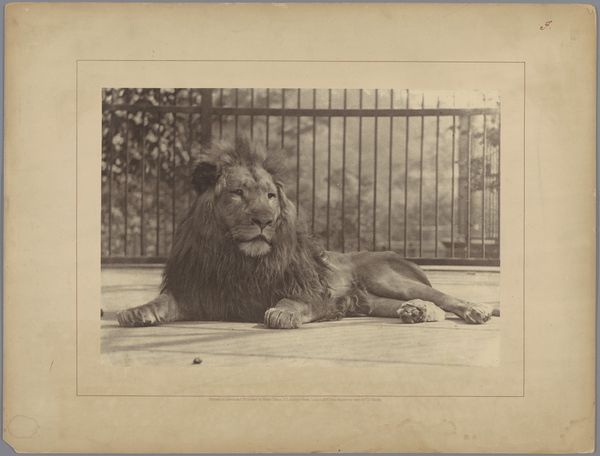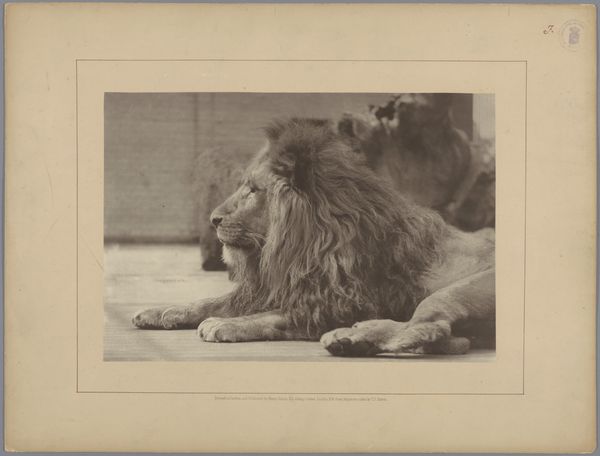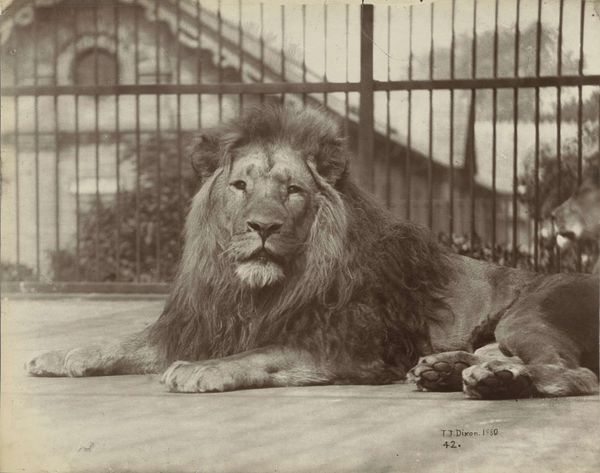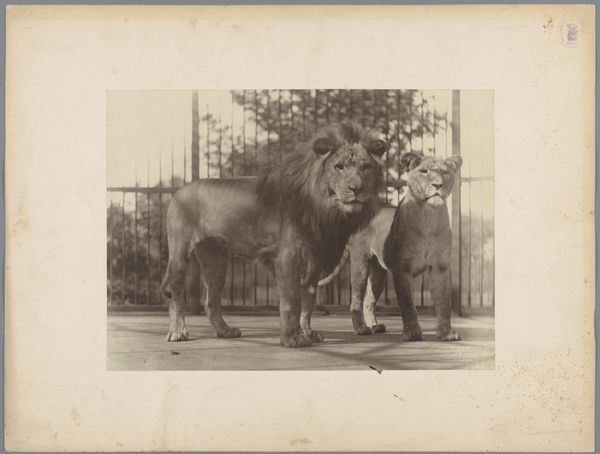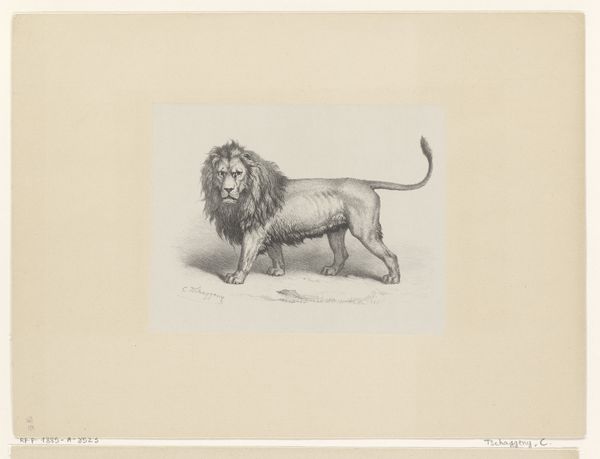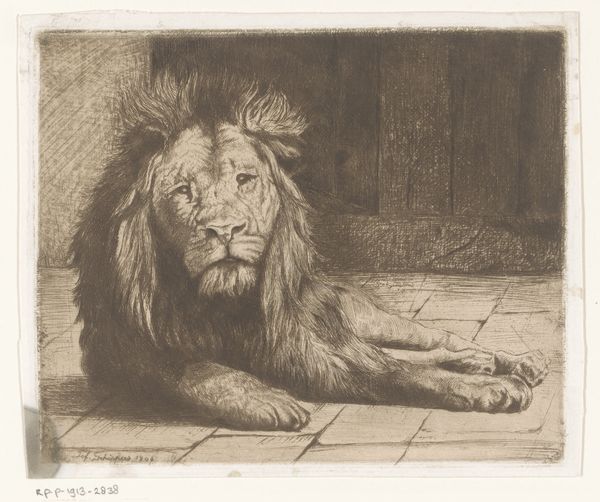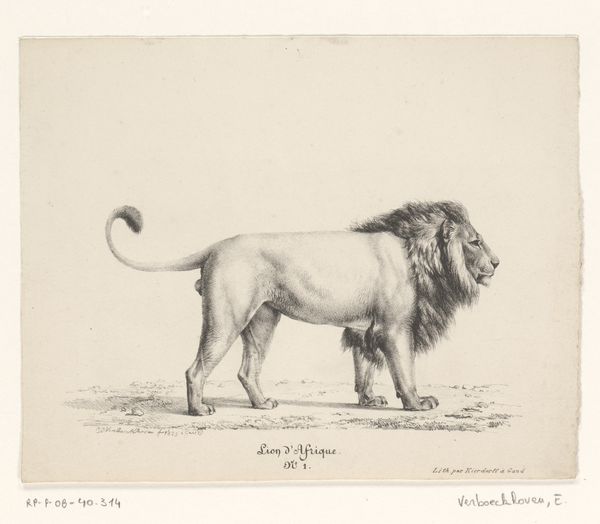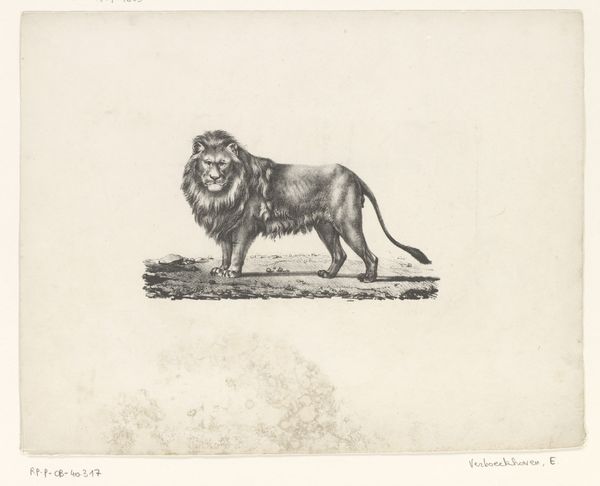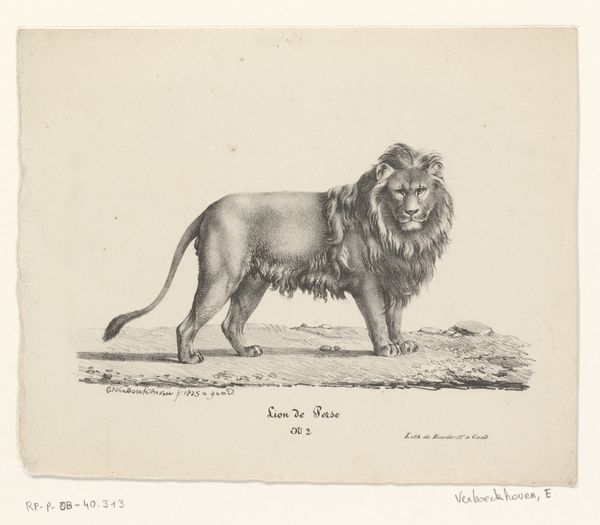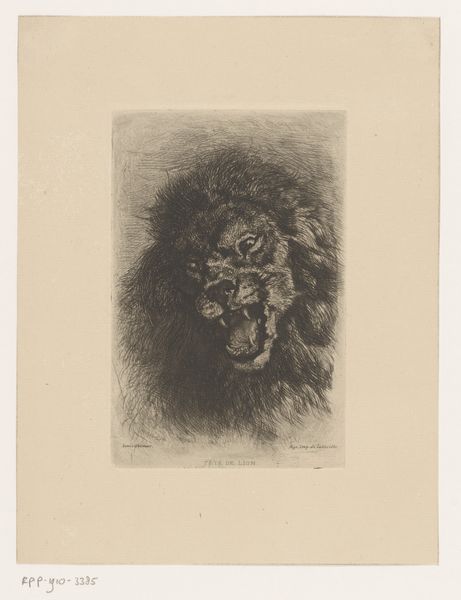
photography, gelatin-silver-print
#
portrait
#
animal
#
photography
#
gelatin-silver-print
#
realism
Dimensions: height 350 mm, width 248 mm
Copyright: Rijks Museum: Open Domain
Curator: Standing before us, we have a captivating gelatin silver print by Thomas James Dixon, titled "Leeuw in een dierentuin in Londen," or "Lion in a Zoo in London," circa 1879, currently housed at the Rijksmuseum. Editor: Gosh, what strikes me immediately is this magnificent creature’s stoicism; it's just lounging there with the weight of the world – or at least the zoo – on its massive paws. Curator: Indeed. Dixon's composition is rather striking, isn't it? The subject occupies a majority of the frame. Observe how the play of light and shadow across its mane creates depth and texture, highlighting the physical essence of the animal. The background's simplicity focuses our attention squarely on the lion itself. Editor: You know, it's almost like a regal portrait, but the backdrop kind of kills the vibe, doesn’t it? Those bars—the reality of captivity juxtaposed with an inherent wildness in the lion's eyes. You can almost smell the dust and the longing for something untamed. Curator: Precisely. This tension creates an intriguing dynamic. Dixon, through the employment of realism, forces us to consider our relationship with the natural world, inviting reflections on themes of power, confinement, and the gaze. Consider also how portraits of the era tended to capture humans only and in contrived and elegant poses. What could be said about choosing a beast for that role? Editor: I see what you mean. It is the question of objectification too, no? The image itself becomes part of this lion’s extended cage. And I’m part of that when I gawk at it, right now. Makes you wonder about what kind of emotional or even spiritual damage we do when we turn everything, even wild animals, into spectacle. Curator: An astute observation. The photograph then operates as both a document of the zoo and a meditation on our role within it. Note how the grayscale palette adds to the somber, contemplative mood of the piece. It drains away any possible excitement associated with seeing something as wild as this; what we are left with is stark contemplation of exploitation and being on display. Editor: True, there’s this melancholy feeling; almost like it’s staring right through us and out the other side of the gallery wall, into a world we've largely forgotten, or maybe never knew. Thanks for helping me read this with so much added dimension. Curator: The pleasure is all mine. These older photographs continue to give back.
Comments
No comments
Be the first to comment and join the conversation on the ultimate creative platform.
